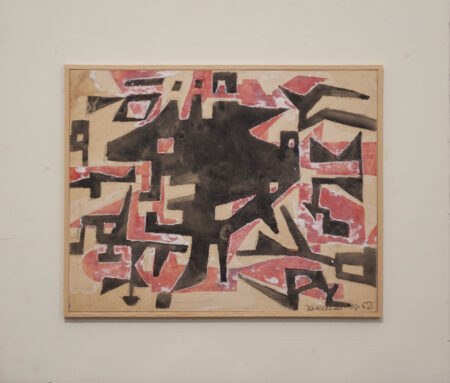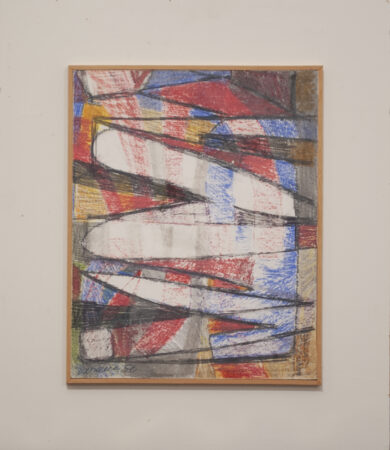Josef Jarema (Stary Sambor, 1900 – Nizza, 1974)
Jarema knew no boundaries, no barriers, no limits. He was multitalented, a go-getting, versatile creative who was never satisfied with just one thing; he was a networker and doer long before the word “networking” existed and “doing” was a virtue in art.
In 1918, he moved to Kraków, where he studied painting, and in 1924 to Paris, where he moved in artistic circles that included Louis Aragon. In 1931 he returned to Kraków, first founded the magazine Glos Plastyków (The Voice of the Plasticists), then the legendary avant-garde theater Cricot. He wrote experimental plays, staged absurdist literary performances, and appeared as an actor.
During World War II, he made his way via Romania to the troops of the Polish general Władysław Anders. In 1939, immediately after Germany’s invasion of Poland, Anders was taken prisoner by the Soviets, who were allied with Hitler. When the Soviet Union was finally invaded by the German Wehrmacht itself in 1941, Stalin instructed the imprisoned Anders to form thousands of Polish prisoners of war in the Soviet Union into a rump army to fight the German troops. This so-called Anders Army eventually won the 1944 Battle of Monte Cassino, where the Western Allies had previously suffered heavy losses and failed to capture the Nazi stronghold.
Jarema was a soldier in action at this battle. Despite his participation in the war as an Anders combatant, he managed to participate in art exhibitions from 1941 to 1945 in Baghdad, Tel Aviv, and Rome, where his unit was stationed in the meantime.





